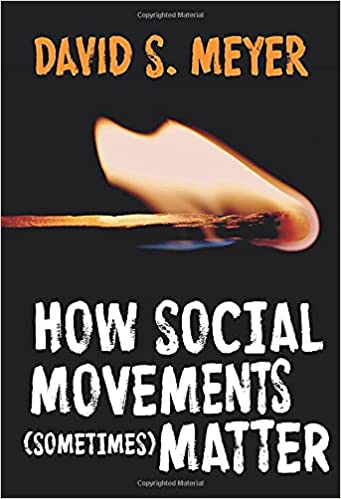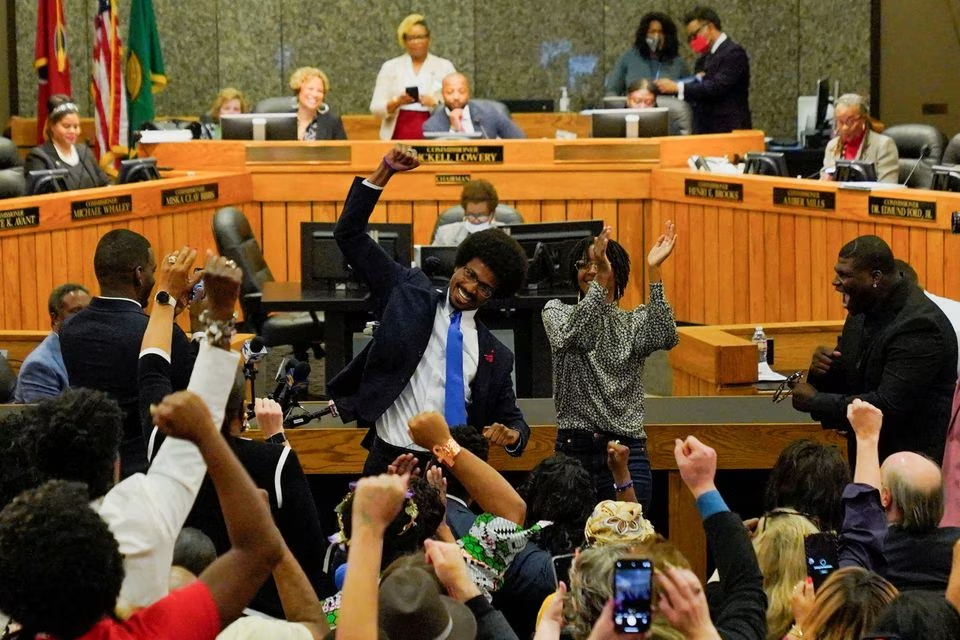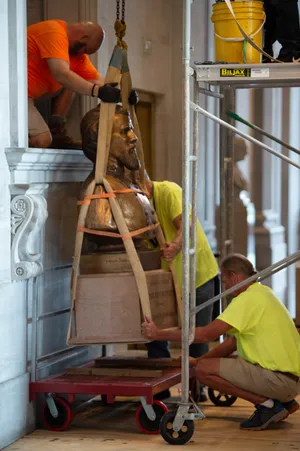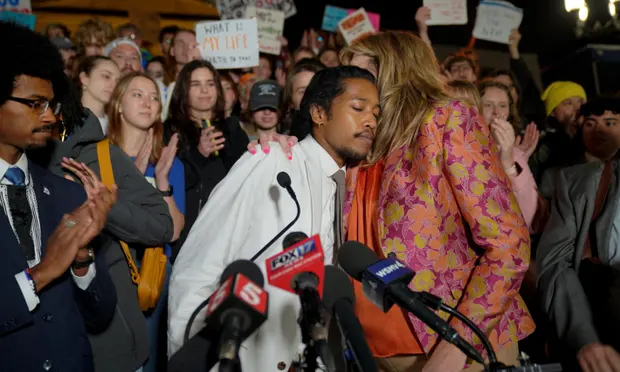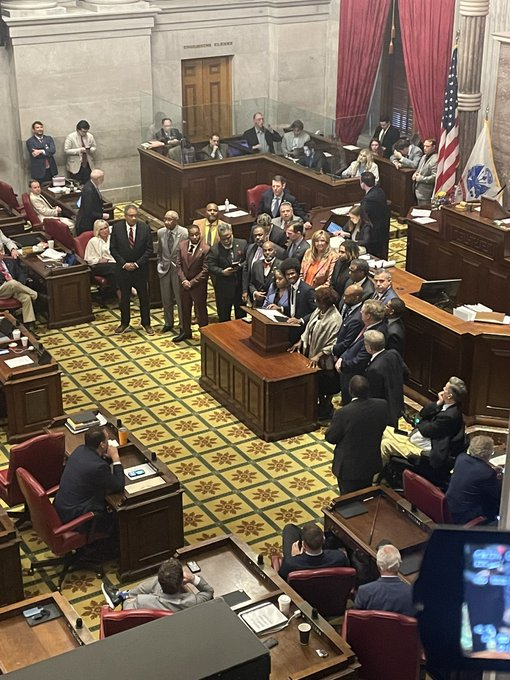Arraignments test convictions too. So do the bursts of detail revealed in charging documents.
A few hundred* Trump loyalists, many in costume, appeared to show their support for the former president, newly indicted in the classified documents scandal. Although the Trumpist turnout in Florida was much bigger and more vigorous than the showing in New York City earlier this year, it’s far smaller than what local police obviously prepared for, and not near the demonstration of division Trump’s allies threatened.
Every charge, trial, and blurted insult provides a chance for supporters to get off the Trump train, and Republican politicians are still trying to figure out how long they can safely ride and walk off in time before…..steaming off into the sea.
Of course, some Republicans never boarded that train for reasons ideological or strategic. Trump was clearly unprepared to be president, departed from Republican orthodoxy on a batch of important issues, presented a substantial drag on the Party’s electoral, and daily displayed considerable character deficits. Still, Trump won the Party’s presidential nomination in 2016, representing its only hope of gaining the presidency. Most Republicans got on board rather than risk being left behind, and the Never Trumpers were marginalized within the Party.
Early defectors among national Republicans fared worse. Senators Jeff Flake (Arizona) and Bob Corker (Tennessee) cited principles (civility and foreign policy, respectively) in explaining their reasons for breaking with the sitting president of their party. They were isolated in Washington, DC, and ostracized at home; neither could mount a viable campaign for reelection.
The impeachments provided additional reasons and opportunities to stand up for something other than Trump. In the House of Representatives Justin Amash (R-Michigan) said that he read the Mueller report before deciding to support impeachment. He was basically forced out of the Republican Party, joined the Libertarian Party, forfeiting any chance at reelection or any kind of political career. Utah Senator Mitt Romney (Utah) was the lone Republican to vote for the first impeachment, surviving politically only because of the strong loyalty he commanded from the Mormon community in his state.
Of course, other Republicans supported Trump less enthusiastically, occasionally explaining differences on one issue or another, or just left office. But when the 2020 reelection campaign commenced, the crowds got in line. Although Joe Biden’s electoral victory was real and substantial, Trump somehow pulled millions more votes than in his first campaign.
Trump’s defeat at the polls was another long stop where Republicans could have changed trains. Most didn’t. The January 6 insurgency was another stop, this time unexpected, and more than a few appeared ready to leave Trump and find other vehicles for protecting themselves. Notably, Senator Lindsey Graham (South Carolina) announced that he was done with Trump, who had just gone too far. But the break-up didn’t take.
Strategic actors, trying to read a room, looked to see how many were ready to move away from Trump, and who they were. Waiting for someone else to move first, politicians in the national party found a way to continue supporting Trump, despite repeated defeats and increasingly egregious claims.The two House Republicans ready to publicly challenge Trump, Liz Cheney (Wyoming) and Adam Kinzinger (Illinois) were isolated in the institution and unable to win reelection.
Strategic considerations–keeping a job, political allies, or golf invitations–trumped principle. Republicans in office were willing to abandon their political stances on everything but Trump, who demanded loyalty. But be sure that most Republicans were still watching and waiting for another moment to break. Among those NOT running for office, including a long line of former Trump staffers and Cabinet officials, pointed criticism was much easier to find.
The presidential campaign, in conjunction with what will surely be an extended set of legal dramas, may have changed the strategic calculus. Fearful of alienating Trump’s electoral base, most of his opponents have been unwilling to criticize the former president on matters of policy or principle, even as they hoped that something else would take Trump out of the race. The challengers have, however, suggested that he might be an electoral liability for the Party. As the details of the most recent indictment appear, eager defectors can proclaim that loyalty to country supersedes commitments to Trump. Tentatively, at first, Nikki Haley and Ron DeSantis, have suggested that–if proven–the charges against Trump are serious. They’re testing the response.
Meanwhile, Americans for Prosperity Action (funded by the Koch network) has begun running ads that focus on Trump’s electoral liabilities, even asserting that Trump may be the only Republican who would be unable to defeat President Joe Biden.
It’s not a Never Trump movement so much as a not Trump now campaign. Principled early defectors suffered for what we can call premature prescience. But now, each new Republican Trump opponent coming out makes it a little less risky and a little less difficult for the next pragmatic politician to follow.
It’s certainly not most Republicans, at least not yet, and be sure that there will be some dead-enders who will cling to Trump through their last breath. But the pragmatic case for defection is getting stronger and stronger.
When politicians reconsider their political commitments, the deliberations and decisions eventually become public–and they have to explain their choices. But at the grassroots, no-longer-loyal Trumpists don’t have to explain their decisions to anyone.
They just stop showing up.
* The total number of demonstrators was initially reported as in the dozens, before I posted. Since then, later reports identified hundreds of protesters.








